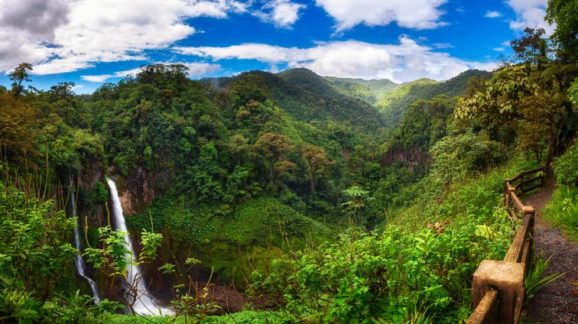Warming Nights, Longer Growing Seasons, and a Greener Planet

Photo Credit: Getty
Dozens of recent news stories note newly published research showing that night temperatures are rising faster than daytime readings. Despite this “asymmetric” warming, there is plenty of evidence in multiple analyses of satellite data that the Earth is becoming much greener. The biggest increases are over the world’s tropical rainforests, the most biologically diverse environments on the planet.
The most recent paper night versus day warming is by the University of Exeter’s Daniel T.C. Cox and three coauthors in Global Change Biology. Scientifically, this is nothing new, and it is hard to understand all the headlines. This paper cites a slew of work, some going back nearly 30 years, showing that the 24-hour temperature range is shrinking a bit, thanks mainly to preferential night warming. Consistent with night warming, decades ago I published a demonstration that the more cold air there is, the more it warms.
Cox et al found that around 54 per cent of the world’s land masses have been experiencing a quarter of a degree (Celsius) more warming in the night than the day. In terms of annual temperature, this is equivalent to moving 25 miles south—something that wouldn’t appear ecologically consequential.
For comparison, the local urban heat island effect in Washington, D.C. is eight times greater, or equivalent to a 200-mile movement, which is enough to reveal subtle changes in the species composition of natural vegetation. As shown by the Environmental Protection Agency, this magnitude of urban heating is rather typical of large cities. While global climate changes certainly add on to those locally induced, the lion’s share of urban heating is a local effect from all the bricks, buildings, and pavement retaining more heat than the previous, naturally vegetated surface.
Perhaps the best documentation of planetary greening is in a landmark 2016 paper in the journal Nature Climate by Zaichun Zhu and several coauthors. They showed that almost all of the planetary greening is because of human activity. 70 per cent of the observed increases are caused by the direct stimulation of plant growth by increasing atmospheric carbon dioxide, another 9 per cent is from deposition of nitrogen, 8 percent from global warming itself, and 4 per cent from land use change. That totals up to 92 percent of the greening being caused by us.

Figure 1. Trends in satellite-sensed Leaf Area Index, a measure of the amount of green matter per square meter of the Earth’s surface. The largest (purple-colored) increases are over the world’s tropical rainforests. Areas with statistically significant changes are stippled. From Zhu et al. (2016), cited above.
This seems like strong evidence that the asymmetry in daily warming is of little net consequence. The climate change component of greening is also accentuated in the high northern latitudes of our hemisphere, owing to longer growing seasons, which is the time between the last killing frost in the spring and the first in the fall.
Cox et al associate the preferential night warming with slight increases in clouds and rainfall, which, everything else being equal, should make for a greener planet. They also note that there are places on Earth where the opposite is taking place, with days warming more than nights, less cloudiness and precipitation, and diminished plant growth.
The bottom line remains that human activity, on net, is making for a much greener planet, a fact that seems hard to get exercised about.